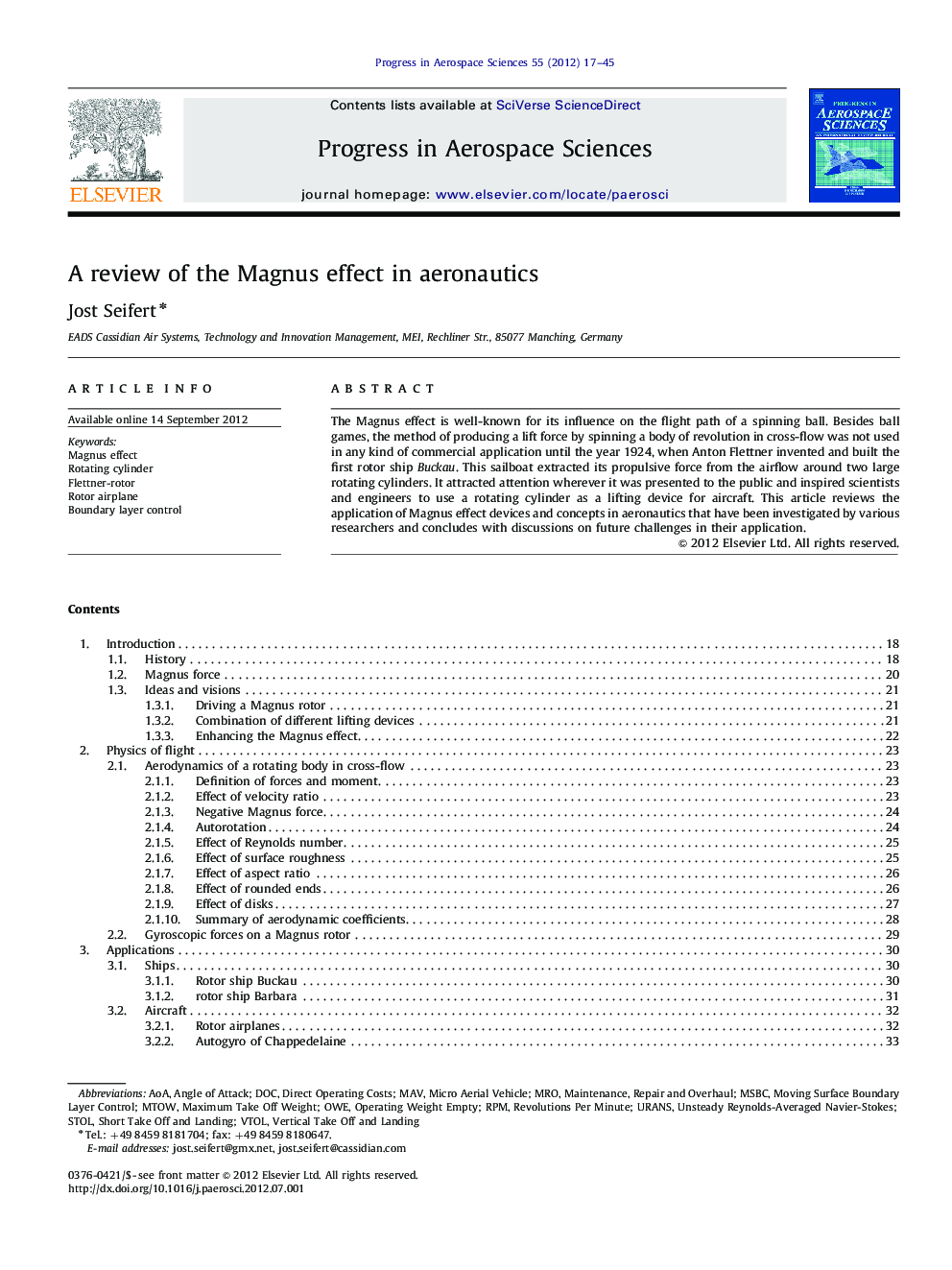| Article ID | Journal | Published Year | Pages | File Type |
|---|---|---|---|---|
| 1719339 | Progress in Aerospace Sciences | 2012 | 29 Pages |
Abstract
The Magnus effect is well-known for its influence on the flight path of a spinning ball. Besides ball games, the method of producing a lift force by spinning a body of revolution in cross-flow was not used in any kind of commercial application until the year 1924, when Anton Flettner invented and built the first rotor ship Buckau. This sailboat extracted its propulsive force from the airflow around two large rotating cylinders. It attracted attention wherever it was presented to the public and inspired scientists and engineers to use a rotating cylinder as a lifting device for aircraft. This article reviews the application of Magnus effect devices and concepts in aeronautics that have been investigated by various researchers and concludes with discussions on future challenges in their application.
Keywords
Related Topics
Physical Sciences and Engineering
Engineering
Aerospace Engineering
Authors
Jost Seifert,
